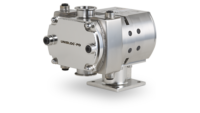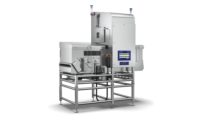Staying competitive in challenging times: How new X-ray inspection technology can help

As manufacturers weigh their next steps to determine how to best bring their business forward in an uncertain environment, they may be looking to invest in x-ray inspection equipment to set the stage for brand protection and future growth.
Although an x-ray machine is a considerable new capital cost, there can be even higher costs associated with food safety and quality issues caused by physical contaminants and with noncompliance with food safety regulations. To prevent such losses and position manufacturers for future success, Eagle has continued to develop and improve inspection technologies and software.
For example, small and mid-sized companies as well as large manufacturers looking to standardize their equipment can reap many benefits from the recently-introduced EPX100, a smaller-footprint, low-energy x-ray system for packaged products that provides superior contaminant detection and weight verification with improved statistical data and visibility. The new Eagle QuadView Short, also with a more compact footprint, is designed for x-ray inspection of jars and bottles with four-view coverage for glass-in-glass contaminant detection. The updated Eagle Pack 400 HC uses a next-generation detector to inspect fresh chicken and portioned nuggets for foreign body contaminants and bone fragments.
In addition to best-of-class containment detection and quality checks, these machines address inefficiencies that often lead to costly downtime. “Now is the time for manufacturers to identify areas that are causing loss,” says Christy Draus, Marketing Manager at Eagle Product Inspection.
If the decision has been made to invest in a new x-ray system, a company can take further steps to assess which machine is best for their operation. Eagle works closely with companies to determine the true probability of detection for potential contaminants across their product lines, based on different variables, packaging and processes. “Determining the true probability of detection gives companies a degree of confidence that variables have been considered and examined. This also provides an accurate indication of a machine’s expected performance over time on their line,” Draus explains.
Another important step is to work toward calculating the total cost of ownership (TCO) of the new equipment, from the initial cost of buying, installing and starting the system as well as the cost of running machinery year over year. ”Performance is a crucial consideration in determining TCO. A high-performing, efficient x-ray system that is reliable over time and that can improve product integrity, quality and safety, will lead to the highest value of ownership,” Draus says.
To learn more about the features and benefits of x-ray systems that can protect a brand in a challenging marketplace, including new inspection technologies and software, visit https://www.eaglepi.com.
Looking for a reprint of this article?
From high-res PDFs to custom plaques, order your copy today!





